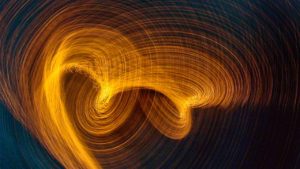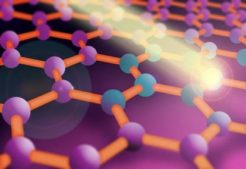Scientists at Imperial College London in London, England have devised a novel way of analyzing tricky 3D plasmonic systems affected by nonlocality – through transformation optics. Though van der Waals forces are relatively easy to calculate in parallel surfaces farther apart than 10 nm, they become very difficult to calculate in tiny distances of less than 5 nm. Furthermore, … [Read more...]
Expanded Amplifier Line Yields Industry Record
Pasternack now offers the industry’s largest selection of in-stock, off-the-shelf RF amplifiers and components with the expansion of its line of connectorized RF amplifiers. This amplifier line offers over 100 unique modules. The improved amplifiers offer high performance, low noise of 0.8 dB and frequencies ranging to 40 GHz. Most of the amplifiers also include SMA female … [Read more...]
4G Study Highlights Need for More Thermal Loss Research
A new study from Danish researchers suggests the ongoing push towards global 4G roaming and high-quality, frequency-reconfigurable antennas will need to account for new loss capacities not considered by previous technology. The worldwide demand for 4G technology and higher data rates in cell phones has led to a new, urgent need for frequency-reconfigurable or tunable antennas. … [Read more...]
Microwave Multi-Tool Steps Towards PROMFA Development
Researchers in Spain and the United Kingdom have developed a resonator element capable of simultaneously acting as both a filter and an antenna in a major step towards the development of programmable microwave function arrays (PROMFAs). The so-called microwave circuit equivalent of an FPGA is a network of microwave hardware that can be reconfigured to take on different circuit … [Read more...]
Recent Study Proves Stability of Multilayered Silicene
In a recent study, a team of researchers from Italy and France have begun to investigate the fundamental properties and potential uses of 2D silicene, demonstrating that it can remain stable in the presence of oxygen for at least 24 hours. The study, “24 h stability of thick multilayer silicene in air,” published on Monday in the Institute of Physics’ 2D Materials, details how … [Read more...]
Researchers Discuss Narrowband EM Absorbers in New Research
While providing an overview of different types of narrowband electromagnetic absorbers, researchers from the Zhejiang University in Hangzhou and the Taiyuan University of Technology in China point out ways to create effective broadband/multiband absorbers with crucial applications in fields like solar-energy harvesting. The review article “Plasmonic and metamaterial structures … [Read more...]
No-Power Wi-Fi Connectivity May Boost Internet of Things
Researchers at the University of Washington have developed a communication system that uses radio frequency signals and repurposes existing Wi-FI infrastructure to supply power and provide Internet connectivity, respectively, to battery-free devices. Known as Wi-Fi backscatter, this technology is the first of its kind capable of connecting battery-free devices to Wi-Fi … [Read more...]
Wireless Power Transfer Employs Mini Receivers for Greater Efficiency
Scientists in Korea have developed a new wireless power transfer (WPT) technique using miniaturized receivers that enables more efficient wireless power transfer at greater distances than ever before. WPTuses overlapping magnetic fields, rather than wires, to transmit electric power. This technology is believed to have wide range of potential uses, from wireless cell phone … [Read more...]
Controlling Graphene’s Conductivity Using Light
Researchers at MIT have discovered a novel way of controlling graphene’s electrical behavior, using light pulses to modify the material’s conductivity. Because of its lightness and efficacy, graphene has been one of the most talked-about materials in recent years, with a wide range of still-untapped uses and applications in science and technology. In a paper recently published … [Read more...]
Scientists Investigate ‘Quantum Glue’ Trigger for Superconductivity
Physicists at the University of Illinois at Chicago have identified the “quantum glue” that binds electrons together to evoke superconductivity in a crucial step towards the creation of high-speed energy transport methods that conduct electricity without current loss. The new research, published online in the Proceedings of the National Academy of Sciences, is a collaboration … [Read more...]
- « Previous Page
- 1
- …
- 28
- 29
- 30
- 31
- 32
- …
- 41
- Next Page »












